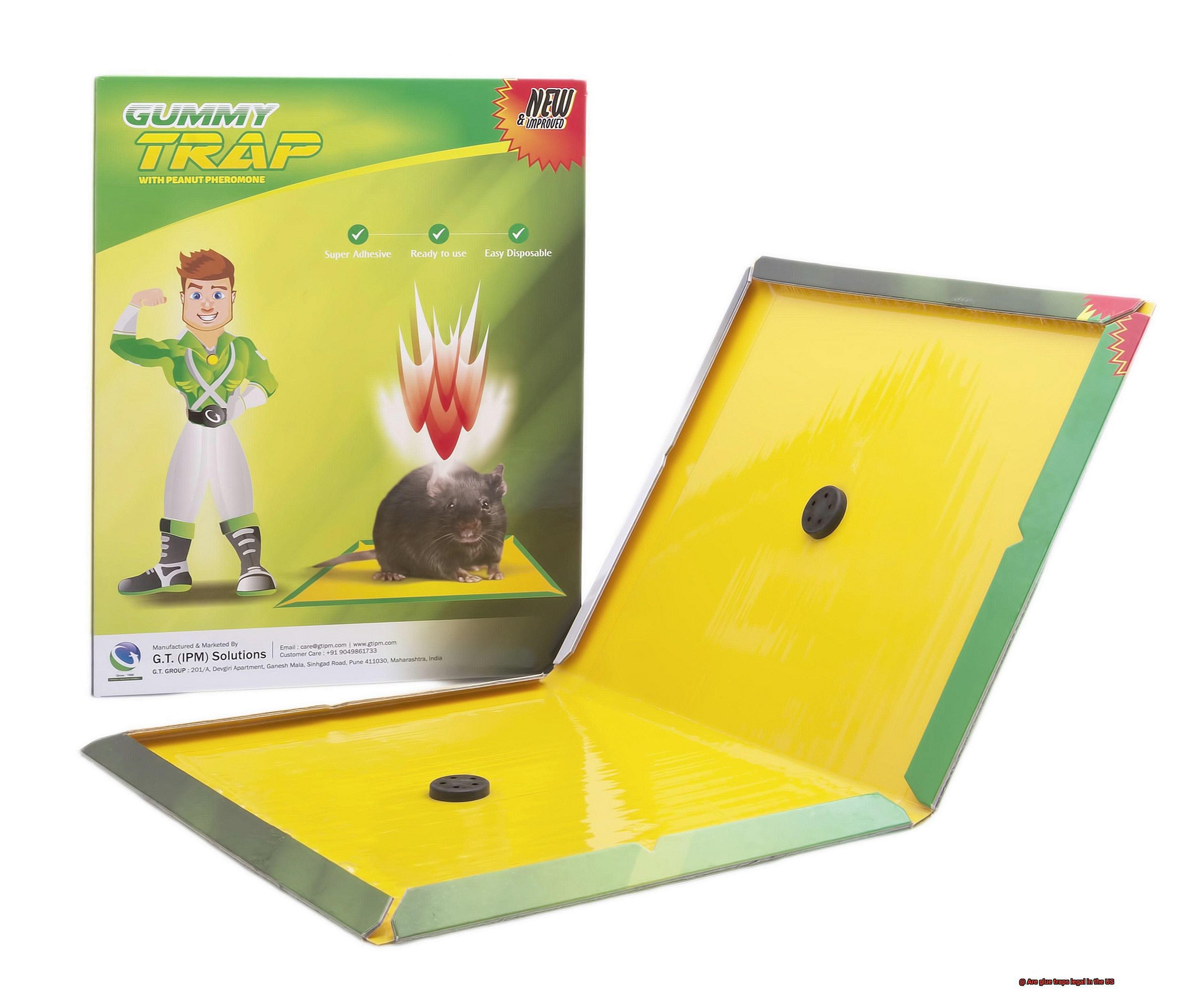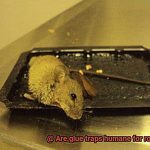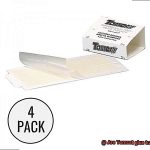Hey there.
Contents
- 1 Glue Trap Laws in the US
- 2 State Regulations on Glue Traps
- 3 Federal Laws and Animal Welfare Act
- 4 Organizations Opposing the Use of Glue Traps
- 5 Alternatives to Glue Traps
- 6 Advantages and Disadvantages of Using Glue Traps
- 7 How to Use Glue Traps Humanely
- 7.1 Regularly Check and Inspect the Traps:
- 7.2 When checking the traps, approach them calmly and quietly to avoid causing additional stress to any trapped animals. Use gloves or other protective gear to handle the traps and avoid direct contact with the adhesive. Carefully examine each trap for any signs of captured pests or unintended captures. If a pest is found, proceed to gently remove it from the trap using the methods described in the next section.
- 7.3 Gently Remove Animals from Glue Traps:
- 7.4 If an animal is found stuck on a glue trap, it is important not to pull it off forcefully. This can cause serious injuries such as skin tearing or limb dislocation. Instead, use a substance like vegetable oil or cooking spray to gently loosen the adhesive and free the animal. The oil breaks down the sticky substance and allows for a safer removal.
- 7.5 Provide Appropriate Care for Freed Animals:
- 8 Conclusion
So you’ve probably heard of glue traps, those sticky contraptions used to catch pests. But have you ever wondered if they’re actually legal in the United States?
It’s a question that has sparked some serious debates and got animal rights activists and pest control experts all fired up. I mean, sure, glue traps have been around for ages as a way to deal with rodents and bugs, but their ethical implications and potential for cruelty have definitely raised some eyebrows.
In this blog post, we’re going to dive into the intriguing world of glue traps – exploring their legality in the U.S., the arguments surrounding their use, and even checking out some alternative methods that might be more humane when it comes to pest control. So buckle up as we tackle this contentious topic and shed some light on whether glue traps are actually allowed across the nation.
Let’s get started.
Glue Trap Laws in the US
Glue traps, those sticky little devices used to catch pests, have sparked heated debates surrounding animal welfare. Across the United States, laws governing glue traps vary from state to state, creating confusion for individuals seeking to use these traps responsibly and within the bounds of legality. In this comprehensive guide, we will delve into the legal landscape surrounding glue trap laws in the US, shedding light on diverse perspectives and providing invaluable guidance for readers who wish to navigate this complex issue.
Understanding State Regulations:
- Banned States: California, among other states, has taken a strong stance against animal cruelty by completely prohibiting the use of glue traps for capturing domestic animals like cats and dogs.
- Restricted Use: Other states permit the use of glue traps but enforce specific guidelines to ensure humane treatment. These regulations may include restrictions on trap placement and methods or requirements to regularly check traps for captured animals.
- Unregulated States: In certain states, there are no explicit laws concerning glue traps, leaving their use unregulated and open-ended.
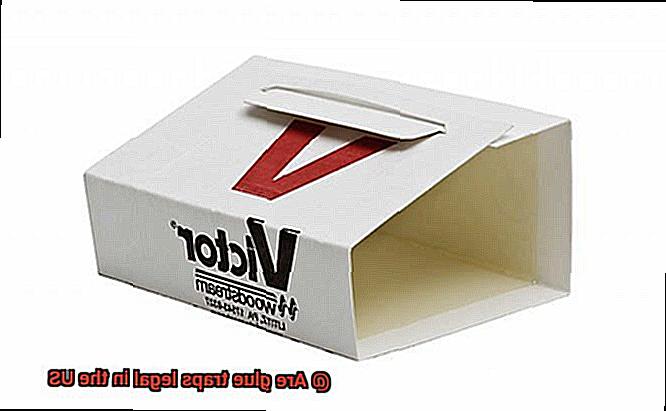
Federal Laws:
Animal Welfare Act (AWA): Although the AWA does not explicitly address glue traps, it establishes general guidelines for animal welfare that can be applied to their use. The AWA covers animals involved in research, exhibition, and commercial purposes.
Ethical Considerations:
- Animal Rights Activism: Numerous organizations and passionate activists argue that glue traps inflict unnecessary suffering on animals. They advocate for stricter regulations or complete bans to protect animal welfare.
- Humane Alternatives: Many individuals and pest control professionals opt for alternative methods such as catch-and-release traps or integrated pest management techniques that prioritize prevention and exclusion over lethal means.
State Regulations on Glue Traps
State regulations on glue traps in the United States vary depending on the specific laws and regulations of each state. While glue traps are regulated at the federal level, individual states have the authority to implement their own rules and restrictions.
Some states have taken a strong stance against glue traps and have completely banned their use. These states are concerned about animal cruelty and the unintentional capture of non-target species. They believe that glue traps cause unnecessary suffering and should not be used as a method of pest control.
On the other hand, many states take a more moderate approach and place restrictions on the use of glue traps. These restrictions can include labeling requirements for specific pests, limiting their use to certain areas, or requiring professional pest control operators to be licensed. It is important for individuals and professionals alike to familiarize themselves with the specific regulations in their state before using glue traps to avoid any legal repercussions.
Proper disposal of glue traps is another aspect that states regulate. Some states have specific guidelines on how to dispose of these traps to prevent environmental contamination. It is crucial to follow these guidelines to protect our planet while dealing with pests.
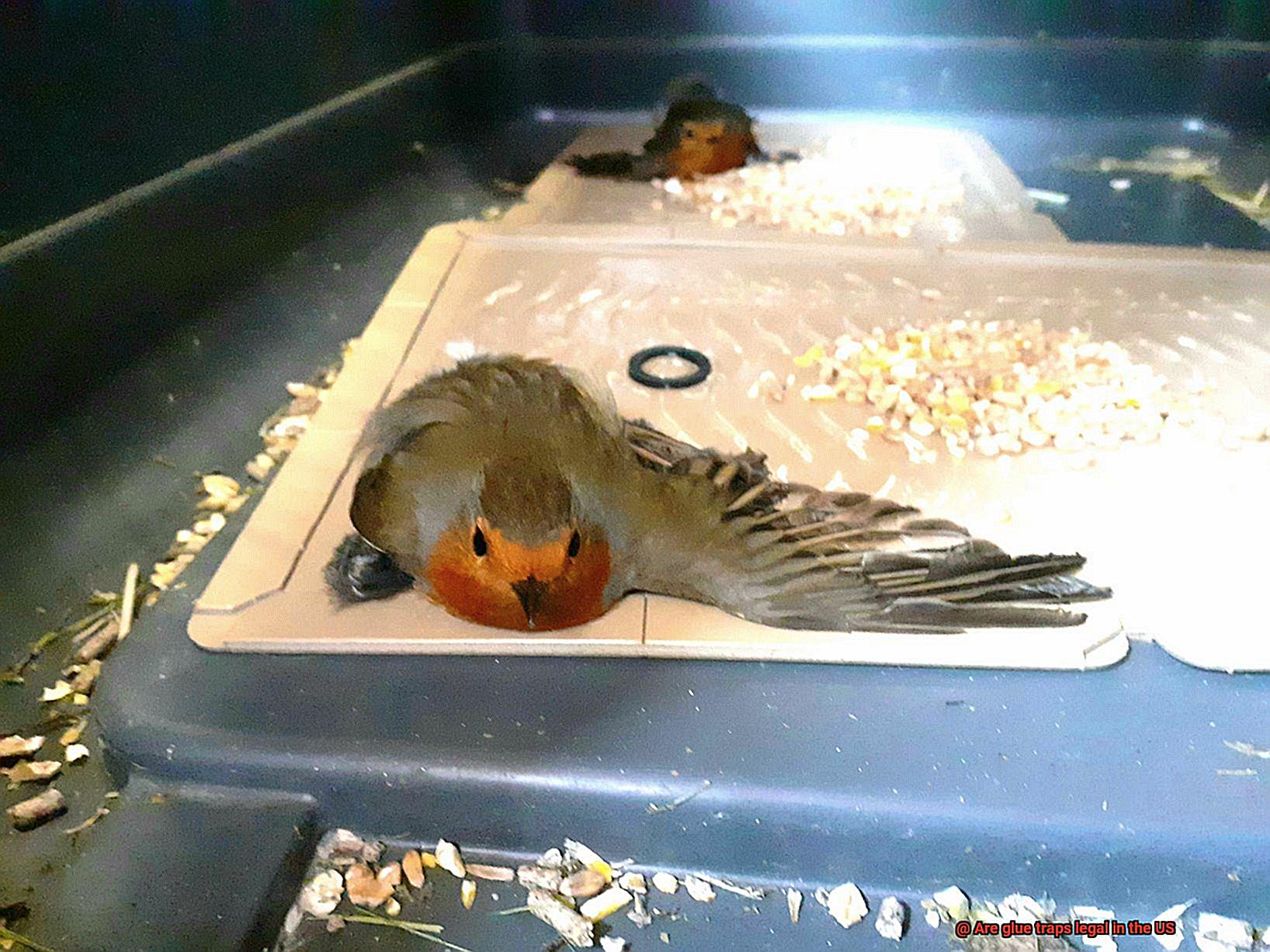
Animal rights organizations have been advocating for stricter regulations on glue traps to protect animals from unnecessary suffering. Their efforts aim to promote more humane and eco-friendly alternatives for pest control.
To find more information on state regulations regarding glue traps, individuals can visit their state’s official website or consult resources provided by animal welfare organizations such as the Humane Society of the United States. These resources can offer valuable insights into alternative pest control methods that are more ethical and environmentally friendly.
Federal Laws and Animal Welfare Act
Imagine coming home to discover a trail of tiny footsteps leading to your kitchen, signaling a rodent problem. Many people turn to glue traps as a solution, but are these traps really as harmless as they seem? In this article, we will delve into the world of glue traps and how federal laws, specifically the Animal Welfare Act, regulate their use in the United States.
The Animal Welfare Act:
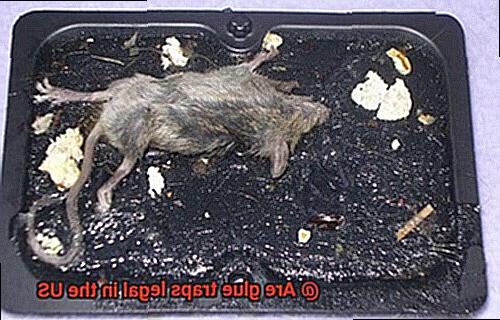
The Animal Welfare Act is a federal law that establishes standards for the treatment of animals in various settings. While it does not specifically address glue traps, it emphasizes the humane treatment of animals. Glue traps raise ethical concerns due to the potential suffering and distress they cause to trapped creatures. Although the Animal Welfare Act mandates adequate housing, nutrition, veterinary care, and protection from harm for animals used in research or exhibition, some argue that glue traps fall short of meeting these standards.
State and Local Regulations:
In addition to federal laws, state and local regulations may also govern the use of glue traps. Some states have banned them entirely due to concerns about animal cruelty and unintentional harm to non-target species. Others impose restrictions such as labeling requirements and limitations on their use. Proper disposal is regulated by some states to prevent environmental contamination. It is crucial for individuals and professionals alike to be aware of these regulations to avoid legal trouble.
The Role of the EPA:
The U.S. Environmental Protection Agency (EPA) also plays a role in regulating glue traps. While primarily focused on pesticide products, some glue traps may be classified as pesticides if they contain toxic substances or make claims about pest control. These traps must undergo testing and receive registration from the EPA to ensure safety for humans, animals, and the environment.
Enforcement and Advocacy:
Despite existing regulations, enforcement can vary across different jurisdictions. Limited oversight or enforcement may allow individuals or businesses to use glue traps without facing legal consequences. However, animal rights organizations like PETA advocate for the banning of glue traps due to their inherent cruelty. They promote more humane and effective alternative methods of pest control.
Conclusion:
Glue traps remain a popular choice in the United States, but they are not without controversy. Federal laws, particularly the Animal Welfare Act, aim to ensure the humane treatment of animals. State and local regulations further dictate the use and disposal of glue traps. The EPA also regulates glue traps classified as pesticides. With inconsistent enforcement and growing advocacy for alternatives, it is vital for individuals and businesses to be well-informed about their legal obligations and consider more humane methods of pest control.
Organizations Opposing the Use of Glue Traps
Glue traps – those sticky adhesive sheets used to catch rodents and insects – have become a subject of intense debate in recent years. While some people see them as a necessary evil in pest control, there are several prominent organizations that strongly oppose their use. These organizations include PETA, the Humane Society of the United States (HSUS), and the American Society for the Prevention of Cruelty to Animals (ASPCA).
Animal rights organizations have been at the forefront of this opposition, arguing that glue traps cause immense suffering to animals. PETA, for instance, highlights the horrifying ordeal these creatures go through when trapped. They can struggle for hours or even days, desperately trying to free themselves before succumbing to exhaustion, dehydration, or starvation. The HSUS shares similar concerns and advocates for more humane and effective methods of pest control. They emphasize the need for alternatives such as live-trapping and releasing pests in their natural habitats or implementing integrated pest management techniques.
But it’s not just animal rights organizations that oppose glue traps. Some health and safety organizations also express concerns. They worry that glue traps can pose risks to children and pets who may accidentally come into contact with them. The ASPCA advises against using glue traps and recommends seeking professional help if dealing with pest problems.
Due to these ethical concerns and potential health hazards, many municipalities and cities have banned or restricted the use of glue traps. Some states, like California, have even implemented laws requiring warning labels on glue traps to inform consumers about their dangers and proper usage.
While there is opposition to the use of glue traps, it’s important to note that their legality varies across different states and jurisdictions. Some states have outright banned them, while others have restrictions or no specific regulations regarding their use.
Alternatives to Glue Traps
Glue traps have long been a controversial method for dealing with pests. Not only are they inhumane, but they also pose risks to non-target animals and can be messy to handle. Thankfully, there are numerous alternatives that are not only more humane but also environmentally friendly and highly effective. In this article, we will explore some of the best alternatives to glue traps.
Snap traps:
Snap traps stand as a classic alternative to glue traps. These devices swiftly and humanely exterminate rodents by snapping shut when triggered. They can be baited with enticing food to attract pests, and are considered far kinder than glue traps. While snap traps necessitate the disposal of the trapped animal, they are widely accessible, affordable, and easy to use.
Live traps:
For those who prefer not to harm animals, live traps offer an excellent option. These traps capture pests alive so they can be safely released elsewhere. Live traps can be baited with food or pheromones to attract pests without causing them harm. Although this method requires careful handling and relocation of the trapped animal, it is a compassionate choice for individuals who value the preservation of life.
Electronic traps:
Electronic traps provide a more efficient and less messy alternative to glue traps. These devices use electric shocks or high-voltage grids to swiftly and humanely eliminate pests. They can be baited with enticing food or attractants and are renowned for their effectiveness. Although electronic traps require batteries or power sources, their efficiency makes them a worthwhile consideration.
Natural deterrents:
If you prefer a natural approach, various deterrents can help keep pests at bay. Peppermint oil is known for repelling rodents, while essential oils like lavender or tea tree oil can deter insects. These natural repellents can be sprayed around the home or used in diffusers to create an unwelcome environment for pests, without causing harm to them.
Integrated Pest Management (IPM) techniques:
IPM techniques prioritize prevention over eradication. By eliminating pests’ access to food, water, and shelter, you can discourage infestations. This approach involves sealing cracks and gaps, removing food sources, and maintaining cleanliness. IPM is a long-term solution that reduces the need for traps or pesticides, promoting a healthier and more sustainable environment.
Professional pest control services:
For severe or persistent pest problems, seeking professional help is advisable. Pest control professionals have access to a wide range of humane and effective methods to deal with pests. They can assess your specific situation and recommend the best course of action, which may include traps, baits, or other non-toxic methods tailored to your needs.
Advantages and Disadvantages of Using Glue Traps
Glue traps have long been a popular choice for pest control, but are they really the best option? Let’s delve into the advantages and disadvantages of using glue traps.
Advantages:
- Effectiveness: Glue traps are renowned for their effectiveness in capturing pests. Once they come into contact with the sticky surface, rodents and insects find it nearly impossible to escape. When other methods fail, glue traps can be relied upon to get the job done.
- Easy to Use: Setting up glue traps is a breeze. They typically come pre-baited, eliminating the need to search for additional lures or baits. Simply place the trap in the desired location and let it work its magic.
- Non-Toxic: Unlike pesticides, glue traps are free from harmful chemicals. This makes them a safer option, particularly for households with children or pets. You can have peace of mind knowing that you’re not exposing your loved ones to dangerous substances.
- Cost-Effective: Glue traps are wallet-friendly. They can be purchased in bulk at a low cost, making them a practical choice for individuals or businesses dealing with a pest problem. Save money while effectively dealing with pests.
Disadvantages:
- Inhumane: One major drawback of glue traps is their inhumane nature. When pests get stuck, they often suffer before meeting their demise. This raises ethical concerns for those who prioritize animal welfare. Consider alternative methods that prioritize humane treatment.
- Messy and Unsanitary: Removing trapped pests from glue traps can be messy and unpleasant. The sticky substance may adhere to fur or feathers, making it difficult to release the animal without causing harm. Dead pests left on the trap can also attract other pests or create an unsanitary environment.
- Attractiveness to Non-Target Species: Glue traps are indiscriminate in their capture, which means they can also catch unintended targets such as beneficial insects or small animals like birds. This can disrupt the natural ecosystem and harm species that are beneficial for pest control or pollination. Be mindful of unintended consequences.
- Potential for Escape: Some pests, especially larger rodents, may be able to escape from poorly secured glue traps. This can render the traps ineffective and prolong the pest problem. Ensure that the traps are properly secured to maximize their effectiveness.
How to Use Glue Traps Humanely
Glue traps are a popular choice for catching rodents and insects, but their use has raised concerns about animal welfare. It is crucial to use glue traps in a humane way to minimize the suffering of trapped animals. In this article, we will discuss five key steps to ensure the humane use of glue traps.
Regularly Check and Inspect the Traps:
To use glue traps humanely, it is essential to check them frequently. By doing so, you can remove any trapped animals as soon as possible, preventing further distress or injury. Regular inspections also help identify unintended captures, such as non-target animals like birds or beneficial insects. By promptly addressing these situations, you can reduce harm and collateral damage.
When checking the traps, approach them calmly and quietly to avoid causing additional stress to any trapped animals. Use gloves or other protective gear to handle the traps and avoid direct contact with the adhesive. Carefully examine each trap for any signs of captured pests or unintended captures. If a pest is found, proceed to gently remove it from the trap using the methods described in the next section.
Gently Remove Animals from Glue Traps:
If an animal is found stuck on a glue trap, it is important not to pull it off forcefully. This can cause serious injuries such as skin tearing or limb dislocation. Instead, use a substance like vegetable oil or cooking spray to gently loosen the adhesive and free the animal. The oil breaks down the sticky substance and allows for a safer removal.
To release a captured animal from a glue trap, start by applying a small amount of oil around the edges of the trap where the animal is stuck. Allow the oil to seep into the adhesive for a few minutes before attempting to remove the animal. Gently lift and support the animal’s body, taking care not to cause any harm or injury. Slowly and steadily peel away the adhesive from the animal’s fur, feathers, or limbs, using more oil as needed. Once the animal is free, place it in a secure container or box for further evaluation and care.
Provide Appropriate Care for Freed Animals:
After freeing an animal from a glue trap, it is essential to provide appropriate care. If the animal appears injured or stressed, take it to a wildlife rehabilitator or veterinarian for further evaluation and treatment. These professionals have the knowledge and resources to provide proper care and rehabilitation for the animal.
Before transporting the animal, ensure that it is placed in a secure and comfortable container with adequate ventilation. Keep the container away from direct sunlight or extreme temperatures. If possible, provide some food and water suitable for the species while awaiting professional help. Avoid handling the animal unnecessarily to minimize stress.
9-Xu8PNvkKA” >
Conclusion
In conclusion, the legality of glue traps in the United States is a patchwork quilt of varying regulations. Some states have outlawed their use entirely, while others have imposed restrictions or have no specific guidelines on glue traps. It is crucial for individuals and professionals alike to familiarize themselves with the specific laws in their state before deploying these sticky contraptions, lest they find themselves entangled in legal trouble.
Although the federal Animal Welfare Act does not explicitly address glue traps, it does emphasize the importance of treating animals humanely. As a result, state and local regulations play a pivotal role in governing the usage and disposal of these adhesive devices. The U.S. Environmental Protection Agency (EPA) also steps into the fray by regulating glue traps classified as pesticides to ensure that they pose no harm to humans, animals, or the environment.
Opposition to glue traps stems from animal rights organizations like PETA, as well as health and safety groups concerned about potential risks to children and pets. These advocates champion more compassionate and effective methods of pest control that do not involve subjecting animals to such cruel predicaments.
Thankfully, there exists a plethora of alternatives to glue traps that are both kinder to animals and highly efficient at eradicating pests. Snap traps, live traps, electronic contraptions, natural deterrents, integrated pest management techniques – all provide humane options for those seeking an ethical approach to pest control. Additionally, enlisting professional pest control services can guarantee a solution that balances effectiveness with compassion.
While it cannot be denied that glue traps can ensnare pests effectively, their use raises ethical concerns due to their inhumane nature.

